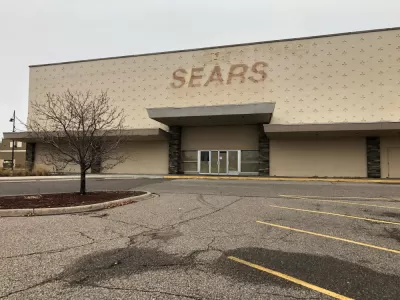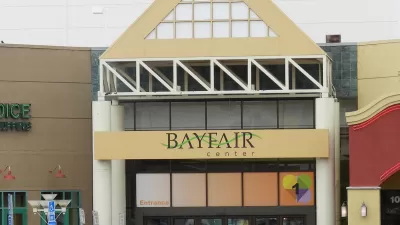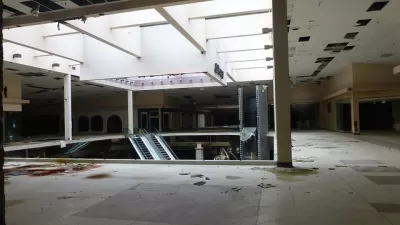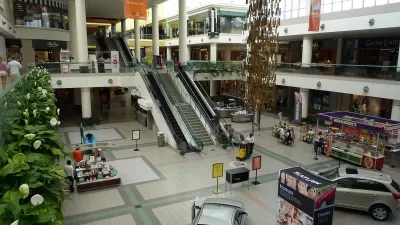‘Dead’ suburban malls, with their existing infrastructure, offer a variety of opportunities for redevelopment into everything from housing to parks.

In an opinion piece in The New York Times, Alexandra Lange calls for a more creative approach to transforming dead malls, one that considers the mall’s roots as an indoor garden. “Some should be demolished and returned to nature, but more should be rethought from an ecological point of view. While malls are a wasteful use of land, replacement with new stand-alone buildings with space-hogging parking lots only compounds that wastefulness: Better to add (perimeter buildings, solar panels, trees) and to swap (markets for department stores, classrooms for boutiques).”
Malls represent heavy investments in infrastructure, construction materials and place making that should not be discarded. The popularity of dead malls as sites for Covid testing and eventually vaccinations underlines these essential qualities: Easy road access, unencumbered indoor space, instant name recognition.
Lange outlines the history of the American mall and its role in public life, then describes a series of mall redevelopment projects that have transformed suburban malls, drawing from “Case Studies in Retrofitting Suburbia” by June Williamson and Ellen Dunham-Jones. Some have been redeveloped into mixed-use projects with apartments, retail, and office space. Others have become civic centers, medical facilities, schools, or parks.
Lange acknowledges the problematic nature of privatizing green space. According to Lange, shopping malls have “historically cultivated specific audiences by virtue of their locations sometimes in segregated suburbs and, later, by codes of conduct designed to limit the impact of groups of teenagers.” However, the changes evident in many shopping centers that formerly catered to mainly white audiences signal that malls can successfully transform into diverse venues for shopping, entertainment, and community functions that serve immigrant communities.
FULL STORY: Get In. We’re Going to Save the Mall.

Study: Maui’s Plan to Convert Vacation Rentals to Long-Term Housing Could Cause Nearly $1 Billion Economic Loss
The plan would reduce visitor accommodation by 25,% resulting in 1,900 jobs lost.

Alabama: Trump Terminates Settlements for Black Communities Harmed By Raw Sewage
Trump deemed the landmark civil rights agreement “illegal DEI and environmental justice policy.”

North Texas Transit Leaders Tout Benefits of TOD for Growing Region
At a summit focused on transit-oriented development, policymakers discussed how North Texas’ expanded light rail system can serve as a tool for economic growth.

Comment: EPA Cuts will Send Atlanta Back to Eye-burning Ozone, Lung-damaging Smog, and Raw Sewage in the Chattahoochee River
A veteran political journalist takes stock of the hard-earned ground Georgia stands to lose with slashed environmental protection.

How Community Science Connects People, Parks, and Biodiversity
Community science engages people of all backgrounds in documenting local biodiversity, strengthening connections to nature, and contributing to global efforts like the City Nature Challenge to build a more inclusive and resilient future.

Alabama: Trump Terminates Settlements for Black Communities Harmed By Raw Sewage
Trump deemed the landmark civil rights agreement “illegal DEI and environmental justice policy.”
Urban Design for Planners 1: Software Tools
This six-course series explores essential urban design concepts using open source software and equips planners with the tools they need to participate fully in the urban design process.
Planning for Universal Design
Learn the tools for implementing Universal Design in planning regulations.
City of Santa Clarita
Ascent Environmental
Institute for Housing and Urban Development Studies (IHS)
City of Grandview
Harvard GSD Executive Education
Toledo-Lucas County Plan Commissions
Salt Lake City
NYU Wagner Graduate School of Public Service




























